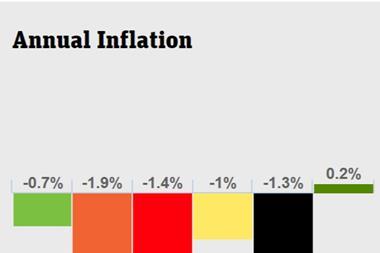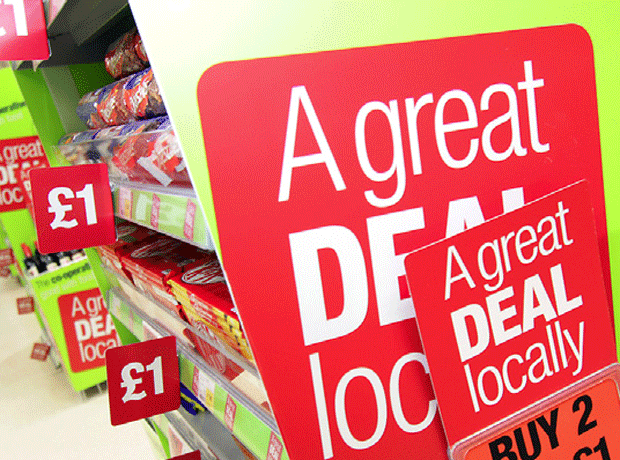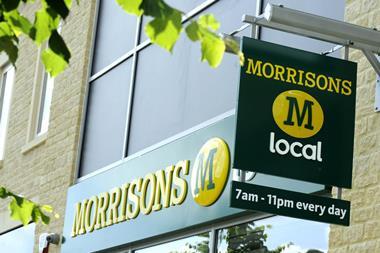
Another day, another stark measure of food price deflation exacerbating the trading problems facing the beleaguered listed supermarkets.
Today’s ONS data revealed that UK CPI slipped to inflation of just 1.2% – the lowest level for five years – dragged down by falling food and fuel prices.
Last month Sainsbury’s CEO Mike Coupe identified price deflation as a key component of the “perfect storm” engulfing the supermarket industry. In that context it is no surprise to see today’s BRC-KPMG Retail Sales Monitor report that like-for-like food sales plunged by 3.6% in the three months from July to September – their steepest drop so far this year.
The level of price deflation was called “a disaster” by Shore Capital today, noting that while pressure on prices has not caused the woes of the sector, the deflation has brutally exposed “flaws in prevailing superstore strategies” that rising prices helped paper over.
As the gap between customer selling prices and operating costs, labour, rents and depreciation has widened, it has left the traditional supermarkets more exposed to the competitive challenge they were already facing from the discount segment.
“The superstores need deflation like a ‘hole in the head’,” Shore Capital notes, adding: “Gross margin pressure from the trading environment… and negative operational gearing are leading to fundamental adjustments in sector strategy and forcing a reappraisal of trading proposition, corporate costs and capital expenditure.”
Without the price deflation supermarkets would still be facing fundamental questions about their whole business models, but they would have more of a margin buffer to buy them time to formulate and enact strategies to help them cope.
The severe drop in food prices has made a difficult situation a close to impossible one.
This is why all three listed supermarkets have embarked on fundamental strategic reviews within months of each other. Morrisons has announced price drops and a new loyalty card offer, while Sainsbury’s and Tesco have yet to announce the results of their own strategic rethinks.
It is no coincidence that Sainsbury’s has cut back the generosity of its Nectar points awards and cut back the breadth of Brand Match in recent weeks.
To reverse their fortunes, and hold on to share, supermarkets will have to be highly strategic – especially as low commodity costs do not seem to support a rise in food prices any time soon.
The ONS figures found that overall food and non-alcoholic beverage prices fell by 1.5% year-on-year – 0.3 percentage points lower than August 2014 and the third consecutive month of deflation.
However, there is also a feeling that, at least in macro economic terms, these hostile conditions for food retailers cannot persist indefinitely.
Outlook more promising?
The long-term trends – moves to online and convenience, and the rise of the discounters – show no signs of abating, but many of the other economic measures look more promising.
Last week Bernstein pointed out the traditional key drivers of overall food retail growth (with the exception of inflation) are all showing positive trends. Petrol prices continue to fall year on year, unemployment is down again, and earnings are improving; suggesting that the stage is set for a return of food inflation, translating into food retail growth.
A generous reading of food deflation data could suggest that, too – for example, although last month’s GPI deflation figure was the highest recorded this year, deflation has stabilised since rising rapidly up to the summer.
What is clear, though, is that food inflation won’t help ease the pressure on the supermarkets for some months yet.
As Shore Capital concludes: “In time this may be a leaner, more fit for purpose and so cash generative industry but reaching this point is proving to be excruciatingly painful for incumbent investors. We yet await the point when the UK supermarket scene becomes ‘investible’ and deflation makes the task all the more challenging.”



















No comments yet